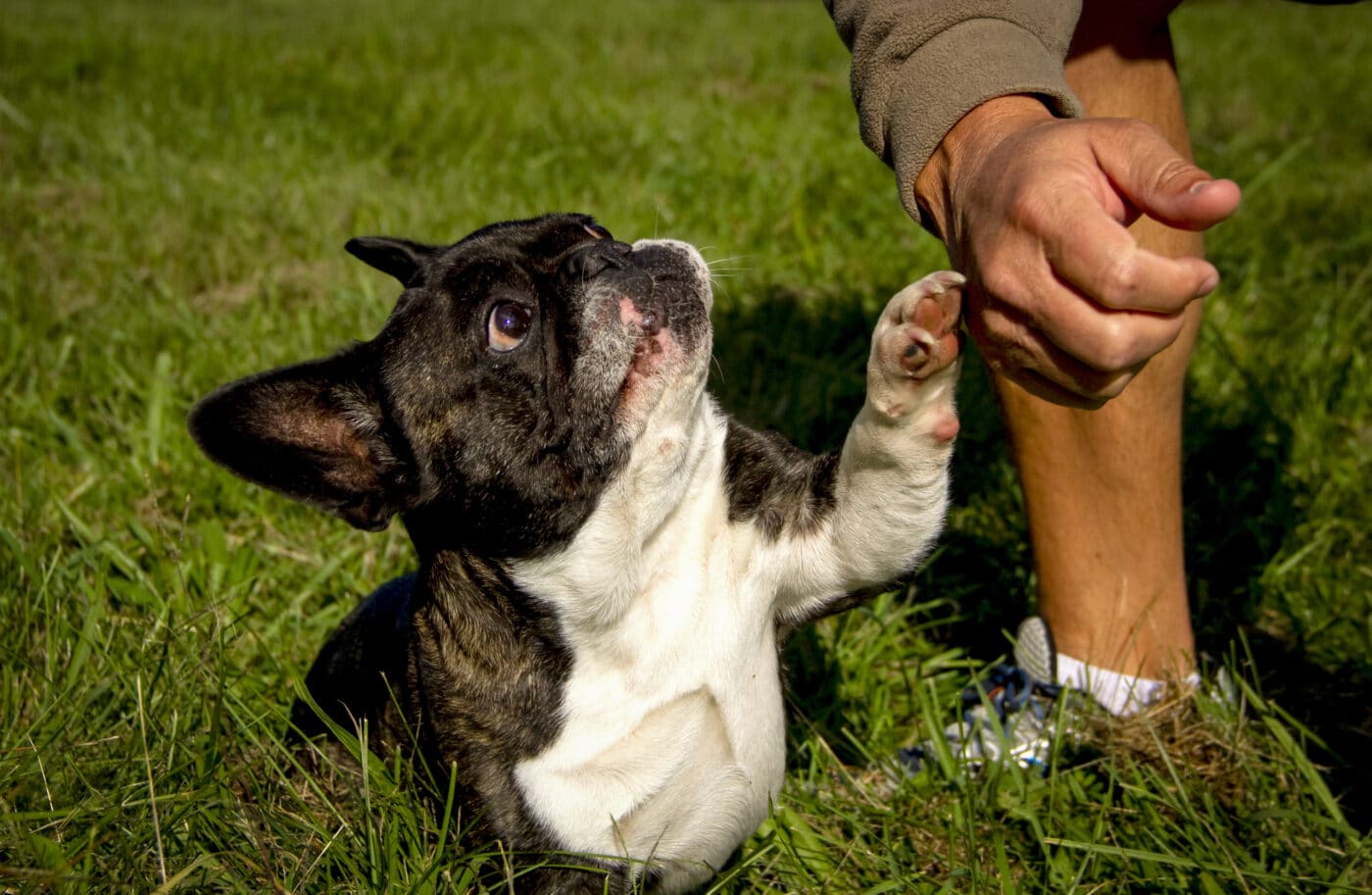 Shutterstock
Shutterstock
Dogs may not speak our language, but they communicate stress in many ways. Their signals can be subtle, like a quick lip lick, or more pronounced, like sudden clinginess. Many pet owners overlook these signs, mistaking them for expected behavior. Other signs include yawning, pinched ears, excessive panting, or avoiding eye contact. Recognizing and responding to these cues can help your dog feel safe and secure. Paying attention and offering reassurance strengthens your bond and ensures their emotional well-being, creating a happier and more trusting relationship.
Unusual Yawning at Strange Moments
 Shutterstock
Shutterstock
Yawning isn’t always about being tired—it can be a sign that your dog is feeling overwhelmed. It signals discomfort if your pup yawns frequently in stressful situations, like at the vet or around unfamiliar people. These stress yawns are often longer and more exaggerated than regular yawns. If you notice this, remove your dog from the situation and offer reassurance to help them feel more comfortable.
Constant Lip Licking With No Food Around
 Shutterstock
Shutterstock
Dogs naturally lick their lips after eating, but frequent lip licking when there’s no food around can indicate stress. This behavior allows dogs to self-soothe when they feel anxious or uncertain. You may notice it when they’re around new people, in an unfamiliar environment, or during an uncomfortable interaction. If your dog does this often, give them space and reassurance to help them relax.
Avoiding Eye Contact or Looking Away
 Shutterstock
Shutterstock
A relaxed dog usually makes eye contact, but an anxious dog will avoid it completely. If your pup suddenly turns its head away or looks at the ground instead of meeting your gaze, it may be feeling nervous. This is especially common when it’s scolded, approached too quickly, or placed in an unfamiliar situation. Giving it space and allowing it to decompress can help rebuild its confidence.
Seeking Hiding Spots Out of Nowhere
 Shutterstock
Shutterstock
Dogs instinctively seek shelter when they feel scared or overwhelmed. If your normally social pup suddenly hides under furniture, behind curtains, or in another quiet place, it’s a sign of stress. This often happens during loud thunderstorms, chaotic gatherings, or when something in their environment feels unsettling. Instead of forcing them out, provide a safe space where they can relax until they feel ready to engage again.
Sticking to You Like Velcro
 Shutterstock
Shutterstock
Some dogs are naturally affectionate, but an unusual increase in clinginess can indicate anxiety. If your independent pup suddenly won’t leave your side, constantly leans on you, or paws at you for attention, it’s seeking comfort. This behavior often appears when the dog feels uncertain or overwhelmed by a situation. Offering gentle reassurance and maintaining the dog’s routine can help restore the dog’s sense of security.
Heavy Panting for No Clear Reason
 Shutterstock
Shutterstock
Panting is normal after exercise or on a hot day, but excessive panting without exertion can signal stress. Anxiety-related panting is usually accompanied by other signs, like a tense posture, wide eyes, or restlessness. This often occurs during car rides, vet visits, or exposure to loud noises. If your dog is panting heavily without a clear reason, remove them from the stressor and provide a calm environment to help them relax.
Tightly Tucked Tail and Stiff Posture
 Shutterstock
Shutterstock
A relaxed dog carries their tail in a neutral position, but a tucked tail is a classic sign of fear. Along with a tucked tail, a stressed dog may freeze in place, hold their body stiffly, or hunch over. This body language indicates that your pup is feeling insecure or overwhelmed. Giving them space and a peaceful environment can help them feel safe again.
Ears Pinned Back Against Their Head
 Shutterstock
Shutterstock
A dog’s ears are a powerful indicator of their emotions. If their ears are pinned back against their head, they may feel nervous or uncertain. This is common in overwhelming social situations, like meeting new people or encountering loud environments. If your dog’s ears remain flattened, take a step back and allow them time to adjust.
Frequent Shaking or Trembling
 Shutterstock
Shutterstock
Shaking off after a bath is normal, but frequent trembling when dry can be a sign of anxiety. Dogs sometimes shake after a stressful encounter as a way to release nervous energy. Trembling is especially common during fireworks, thunderstorms, or vet visits. If your dog is shaking excessively, speak to them softly and create a comforting, quiet space to help them settle.
Sudden Shedding Spikes in Stressful Moments
 Shutterstock
Shutterstock
All dogs shed, but anxiety may be to blame if you notice an increase in fur loss during stressful situations. Due to heightened stress levels, dogs often shed more at the vet, during grooming, or in unfamiliar environments. If you see clumps of fur coming out when your dog is nervous, it’s a sign that their body is reacting to anxiety. Providing reassurance and a sense of security can help minimize their stress.
Ignoring Food and Treats They Usually Love
 Shutterstock
Shutterstock
A dog that suddenly refuses food may not just be picky—they could feel overwhelmed. Stress can suppress appetite, causing even the most food-motivated pups to lose interest in eating. This often happens when they’re in a new place, experiencing tension at home, or recovering from a frightening encounter. Once they feel safe again, their appetite should return to normal.
Pacing Back and Forth Without Settling
 Shutterstock
Shutterstock
An anxious dog may struggle to sit still, pacing back and forth as it tries to calm down. This behavior is common in new environments, when sensing household tension, or when anticipating something stressful, like a vet visit. If your dog is constantly pacing, it may be feeling unsettled or overstimulated. Offering a quiet space, a familiar toy, or gentle reassurance can help them feel more at ease.
Struggling to Focus or Follow Commands
 Shutterstock
Shutterstock
If your normally obedient dog suddenly ignores commands, they may be too stressed to concentrate. Anxiety makes it difficult for dogs to process information, making them appear distracted or unresponsive. This often happens in loud environments, around unfamiliar people, or in overwhelming social situations. Instead of forcing them to obey, give them time to calm down and use positive reinforcement to regain their focus.
The Tail End Of Stress And How To Fix It
 MidJourney
MidJourney
Even though dogs don’t deal with work stress or bills, they still experience anxiety in their own way. They use body language and subtle behaviors to communicate their emotions when overwhelmed. Some signs may be easy to miss, but paying attention helps you understand their needs. By recognizing these signals early, you can provide the comfort, security, and support they need to feel safe. Simple actions like creating a peaceful space, reducing stressors, and offering affection make a difference. A happy, relaxed dog is healthy, so keep their tails wagging!





